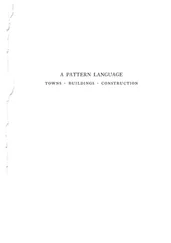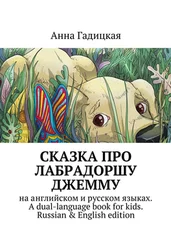1 ...8 9 10 12 13 14 ...25 Alessandro Duranti (1994) explores language use in a very different part of the world. His ethnography, From Grammar to Politics: Linguistic Anthropology in a Western Samoan Village , analyzes political rhetoric in the local village council ( fono ) and shows how speechmakers’ seemingly apolitical, technical choices of grammatical markers can have important political ramifications. Duranti argues persuasively that a close look at the micro level of grammar – at one tiny Samoan grammatical particle in particular – offers important insights into how “the choice of specific linguistic framings for people’s actions, beliefs, and feelings does not simply reflect existing power relations, it also constitutes them” (1994:139). In other words, how people describe their actions, beliefs, and feelings – how they frame them linguistically – both influences, and is influenced by, the power dynamics of the community. Just as the title of Duranti’s book indicates, a grammatical analysis, when situated in actual social contexts, can lead to a better understanding of both grammar and politics.
Kathryn A. Woolard’s book, Singular and Plural: Ideologies of Linguistic Authority in 21st Century Catalonia (2016), also investigates the intersections between language and politics. In particular, Woolard builds on decades of her own research to ask how a language acquires authority in the eyes of the public. In Singular and Plural , Woolard demonstrates that ideologies of authenticity (in the case of minority languages such as Catalan) and anonymity (in the case of dominant languages such as Spanish in Spain) provide common routes to linguistic authority. Both authenticity and anonymity are underpinned by an ideology of “sociolinguistic naturalism,” which views languages as inherently linked to identities and visions of truth. Woolard argues, however, that Catalan speakers are gradually moving toward innovative linguistic practices that challenge these naturalist ideologies (2016:300). The book therefore provides a case study of changes in Catalan linguistic practices, identities, and ideologies over time and a more general theoretical framework for analyzing language ideologies that can be used in other contexts.
James M. Wilce’s (1998) ethnography, Eloquence in Trouble: The Poetics and Politics of Complaint in Rural Bangladesh , looks closely at “troubles talk,” or complaints, including the special genre of laments (improvised crying songs) in Bangladesh. The “eloquence in trouble” of Wilce’s title has two meanings: Bangladeshis who resort to laments to describe their suffering are often quite eloquent; and these sorts of laments are becoming less and less common, and therefore represent a genre in trouble – that is, in danger of disappearing. Wilce’s interest in medical and psychological anthropology leads him to pay special attention to the laments of people others label “crazy.” In so doing, Wilce demonstrates how laments are more than just lengthy, monologic complaints; instead, they are esthetic performances and social interactions during which labels can be both attached and resisted by the performer and the audience members, and realities can be “officialized” (1998:201). A focus on linguistic practices such as laments sheds light not only on the experiences of particular individuals’ sufferings, Wilce argues, but also on broader cultural ideas about appropriate and inappropriate ways to speak and act, especially for Bangladeshi women.
What these six very different ethnographies have in common is their insistence that (1) language must not be studied in isolation from social practices or cultural meanings, and (2) questions about social relations and cultural meanings can best be answered by paying close attention to language. The remainder of this book presents a detailed case for each of these two assertions.
Key Terms in Linguistic Anthropology
In order to provide readers with some tools they can use to approach linguistic anthropology, I have chosen four key terms that provide insight into the socially embedded nature of language and the linguistically mediated nature of social life: multifunctionality , language ideologies , practice , and indexicality . These terms draw upon an array of theoretical approaches from within the field of linguistic anthropology and beyond. As a rule in this book I try to avoid jargon, but linguistic anthropology is no different from other fields such as chemistry or art in having developed a set of specialized terms in order to refer efficiently and accurately to important concepts.
The terms that I have chosen here are “key” in two ways: first, they are central to the main areas of research in the discipline, and second, they can provide readers with important keys to understanding the social nature of language because they come from the social and linguistic theories that have had the greatest influence on current scholarship in the field. Like the terms that are defined in Duranti’s (2001) edited volume, Key Terms in Linguistic Anthropology , the four terms defined below identify some of the features that unify the discipline and will therefore provide common points of reference as we consider specific topics and areas of study within the field.
In the mainstream view of language that is very common in the United States, language is thought to be a way to report events or to label objects or concepts. (Views of the main purpose of language can be quite different elsewhere in the world, as Michelle Rosaldo [Rosaldo, 1982] demonstrated.) Language is much more than reporting or labeling, however – people accomplish many things with words. Linguistic anthropologists use the term “multifunctional” to refer to all the different kinds of work that language does. One of the first scholars to analyze the various functions of language was Roman Jakobson, a Russian linguist who helped form what became known as the “Prague School” of linguistic theory. Jakobson (1960) identifies six “constitutive factors” in any speech event, and then attaches a corresponding function to each of these constitutive factors. All functions are always present in each speech event, Jakobson argues but, in certain cases, one function may predominate over the others. Figure 1.4 is a slightly modified version of Jakobson’s own model (1960:150, 154).

Figure 1.4Jakobson’s model of the multifunctionality of language.
Source : Thomas A. Sebeok, Style in Language , pp. 150, 154, 350–377, © 1960 Massachusetts Institute of Technology, by permission of The MIT Press.
The main point to emphasize in this approach to language is that what many people consider to be the main purpose of language – to communicate information – is only one of six separate functions in Jakobson’s model. He calls this function the “referential” function, and while it is sometimes important in a linguistic interaction, there are many times when other functions predominate. Consider the following hypothetical example:
Your best friend hears that you have just received upsetting news, so she immediately sends you a text that says: “So sorry that I can’t even find the words to tell you.” While the text message conveys some information, and therefore has a referentialfunction, according to Jakobson’s model, the message would probably best be interpreted as being predominantly oriented toward the speaker’s emotions ( expressivefunction) as well as toward the addressee ( conativefunction). The alliteration and the multimodality of the emoticon are examples of the poeticfunction that Jakobson believed was present even in the most mundane of interactions. By reaching out to you in order to reinforce the channel that connects you socially, your friend also activated the phaticfunction of language. And the “language about language” aspect of the message could be said to be an example of Jakobson’s metalinguisticfunction
Читать дальше













